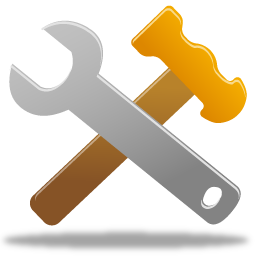Keep your Erg Healthy

Will Spalding, Technical Support Specialist on the Concept2 Customer Service Team, has been helping customers address technical issues with their indoor rowers since 1989. From his years of experience, here are four common problems that rowers encounter with their machines, along with tips for solving and preventing these issues.
Chain Lubrication
Many customers overlook the simple step of lubricating the chain on their indoor rower once for every 50 hours of use. A dry chain will not run as smoothly or as quietly as it should, and will wear out more quickly. Excessive wear is not limited to just the chain. A dry chain will also cause wear on the sprocket (a.k.a. cog or gear) that it runs on to make the flywheel spin when you row. The user may experience a rougher feel and louder sound while rowing with a dry chain, and chain links can become stiff and start skipping as they run over the sprocket teeth.
Solution: Lubricating the chain is simple. Put two teaspoons of lightweight machine oil (e.g. 3-In-One™ multipurpose oil) on a rag or paper towel and run it back and forth over the entire length of the chain. We know of machines in excess of 10 years old with original chains and sprockets that are still running smoothly. This is because the chains have been lubricated on a regular basis.
Light Resistance with Damper Set on 10
Another simple and routine maintenance procedure is to open up the flywheel enclosure and clean it out once for every 250 hours of use (or more frequently if used or stored in a very dusty location). While rowing, air enters the flywheel housing from the side, and escapes around the outer edge (circumference) of the flywheel enclosure. It is normal for some of the dust that enters along with the air to get trapped in the air outlet screen. As the screen gets plugged up with dust, the drag on the flywheel is less than it should be, so that opening the damper all the way to the highest setting (10) has little or no effect.
Solution: Cleaning the flywheel housing is easy for Model D/E and Model C.
Performance Monitor Turns on but Won’t Count
Many people misdiagnose this as a bad Performance Monitor. It is often a problem with the pickup wire.
Solution: The first step is to make sure the pickup wire is properly plugged into the monitor in the smaller of the two round jacks (sockets). Inspect the pickup wire for signs of damage as well (e.g. abrasions, cuts or hard kinks). For clubs, schools and other facilities that have more than one indoor rower of the same model, there are additional easy steps for diagnosing. Pick a machine with a working monitor, and swap monitors from one machine to the other. If the problem stays with the machine, then it’s a pickup wire issue. If the problem follows the monitor, than there may be an issue with the monitor.
Workout Data not Visible on LogCard
Sometimes, through no fault of the user, the data on a LogCard can become slightly jumbled. Our free Concept2 Utility software can be used to reformat the data on the card so it is visible again.
Solution: Download and install the Concept2 Utility software, run the software, and connect the PM3 or PM4 to a PC or Mac with an “A to B” USB cable (printer cable). Insert the LogCard into the PM3/4 and choose “Transfer Data to Spreadsheet.” As the program reads the data, if you are notified that there are errors on the card and asked if they should be repaired and card rewritten, answer yes. The Concept2 Utility software is also used to keep the firmware on the monitor up to date, so you may also be asked if you’d like to update the firmware. Say yes. It is always a good idea to use the most recent software available.
